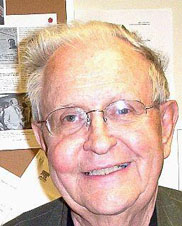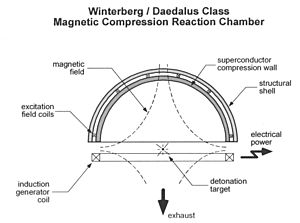Friedwardt Winterberg facts for kids
Quick facts for kids
Friedwardt Winterberg
|
|
|---|---|
 |
|
| Born | June 12, 1929 |
| Nationality | American, previously German |
| Alma mater | Max Planck Institute |
| Known for | General relativity Nuclear rocket propulsion GPS |
| Scientific career | |
| Fields | Physics |
| Doctoral advisor | Werner Heisenberg |
Friedwardt Winterberg (born June 12, 1929) is a German-American theoretical physicist. He used to be a professor at the University of Nevada, Reno. He is well-known for his research in many areas of physics. These include how gravity works on a large scale (called general relativity), how tiny particles behave (at the Planck scale), and powerful energy sources like nuclear fusion and plasmas.
His ideas for using nuclear rocket propulsion for space travel were very important. For this work, he received the 1979 Hermann Oberth Gold Medal. He is also an honorary member of the German Aerospace Society.
Contents
Early Life and Education
Winterberg was born in 1929 in Berlin, Germany. He studied physics and earned his master's degree in 1953 from the University of Frankfurt. In 1955, he received his PhD in physics from the Max Planck Institute in Göttingen. His teacher there was the famous physicist Werner Heisenberg.
In 1959, Winterberg moved to the United States. He was part of a program called Operation Paperclip. This program brought German scientists to the U.S. after World War II. The goal was to use their knowledge and prevent them from working for other countries during the Cold War.
Key Scientific Work
Winterberg is famous for his work on nuclear fusion and plasma physics. Another well-known physicist, Edward Teller, once said that Winterberg's work on fusion might not have received enough attention.
Winterberg is a member of the International Academy of Astronautics. This group works on space exploration. In 1954, he suggested a way to test general relativity using very accurate atomic clocks in satellites orbiting Earth. Also, his idea for starting tiny thermonuclear explosions was used by the British Interplanetary Society. They used it for their Project Daedalus Starship Study, which was about designing a starship.
Testing General Relativity
In 1955, Winterberg wrote a paper suggesting a way to test general relativity. He proposed using very precise atomic clocks placed in artificial satellites. At that time, atomic clocks were not accurate enough, and satellites did not even exist yet!
In 1957, Werner Heisenberg wrote a letter to Winterberg. He said that Winterberg's idea sounded "very interesting." This idea later became a real way to test Einstein's theory.
Fusion Energy Research
Winterberg has written many articles about inertial confinement fusion. This is a way to create fusion energy by squeezing fuel very quickly. He is known for his ideas on "impact fusion." This involves hitting fuel with tiny, fast-moving particles to create fusion. He also developed a way to make strong beams of charged particles. These beams can heat plasmas to extremely high temperatures, hot enough for fusion.
He also thought about how to power spacecraft using nuclear fusion. One of his designs is called the Winterberg / Daedalus Class Magnetic Compression Reaction Chamber. This idea was later developed further at the University of Alabama in Huntsville. More recently, he designed a huge spacecraft that could be powered by tiny fusion explosions. These explosions would be started by a powerful beam of protons.
Winterberg also had ideas for using fusion explosions to mine valuable elements on other planets or the Moon. In the late 1970s, he also worked on ideas for using beam weapons in space.
Winterberg shared his ideas on beam weapons with the U.S. Air Force. He also wrote about these topics for the Fusion Energy Foundation (FEF). The FEF published a book by Winterberg that described how a hydrogen bomb works. Their goal was to help make research on inertial confinement fusion more open to the public. Winterberg also wrote articles and gave interviews for the FEF's magazines. He took part in a conference in 1985 where he spoke about X-ray lasers, the Strategic Defense Initiative (a defense system), and interstellar travel. Many scientists who wanted to promote fusion research attended this conference. Winterberg was never a member of any political groups.
In 2007, Winterberg spoke at a physics convention in Florida. He encouraged scientists to work towards making fusion energy affordable. He also shared his ideas on how to achieve this goal. Winterberg strongly believes in inertial confinement fusion.
Back in 1963, Winterberg suggested that tiny thermonuclear explosions could be started by a strong beam of microparticles. These particles would be accelerated to very high speeds. In 1968, he proposed using strong electron and ion beams for the same purpose. More recently, Winterberg has suggested starting a tiny fusion explosion using a "super-Marx generator." This is a very powerful electrical device made from many smaller Marx generators.
See also
 In Spanish: Friedwardt Winterberg para niños
In Spanish: Friedwardt Winterberg para niños


